This four-move Pilates for posture routine strengthens your muscles and reduces back pain
Doing this short Pilates for posture session a few times a week can ease lower back pain and soothe achey muscles
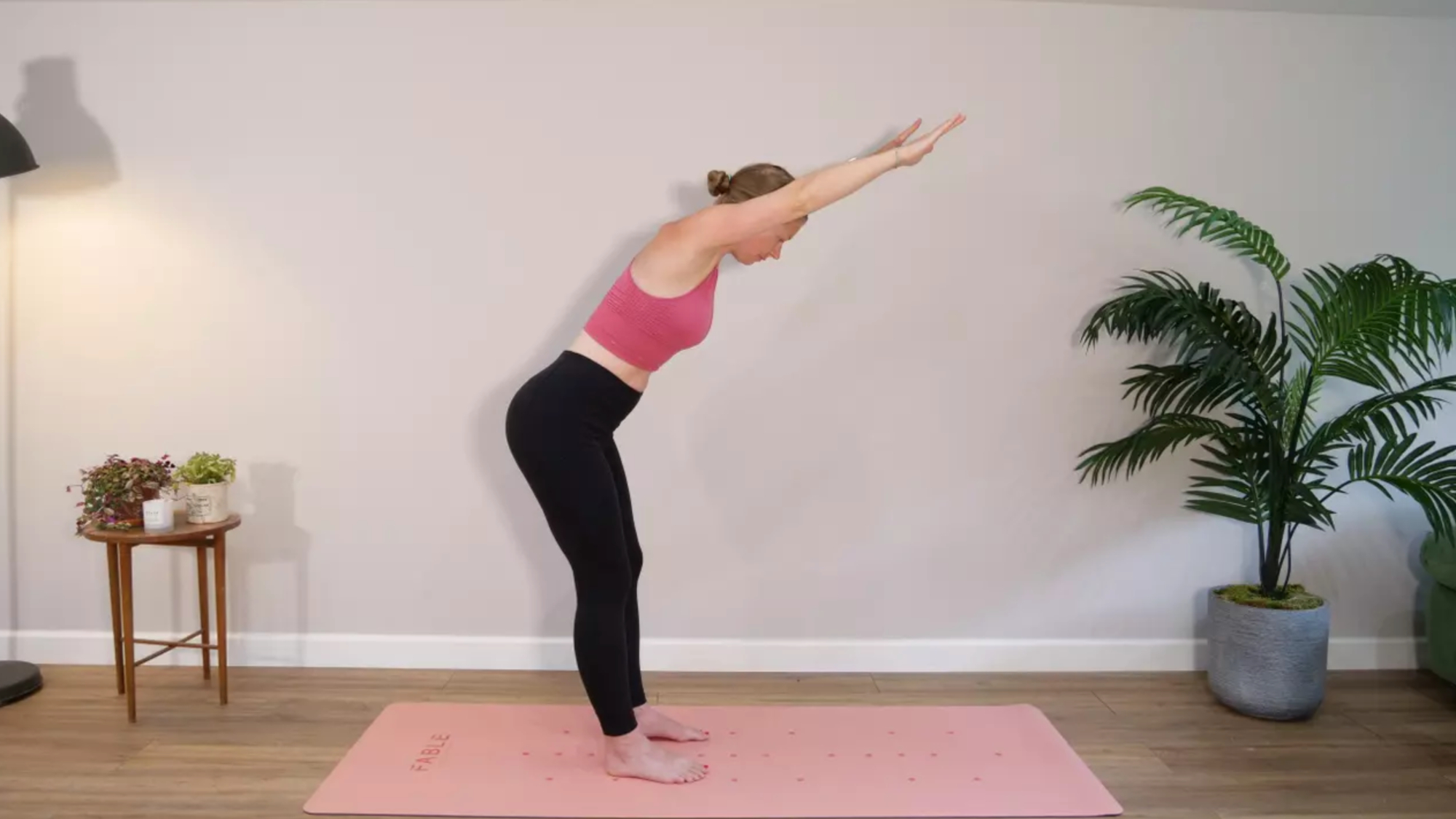
If you've ever found yourself slouched over the dinner table or experiencing back pain after a day of sitting down at your desk, your then a Pilates for posture routine could make all the difference.
Having bad posture is common, especially with so many of us spending most of our time sitting down. But aside from the everyday effects, poor posture can lead to damaged joints and ligaments, and cause to muscle tension, pain, and fatigue.
Fortunately, setting some time to roll out one of the best yoga mats and take on this short Pilates for posture session, designed by Hollie Grant, founder of Pilates PT strengthens key muscles and works your core in just four moves.
Our bodies aren't designed for sitting down all day, which ends up weakening some essential muscles. And when we do need them, "they fail to meet demand and either prevent us doing what we love, or cause discomfort as they fatigue," Grant says.
But you can undo some of these effects with this quick routine that you can do wherever you are and even when you're short on time, much like some of the best yoga stretches for beginners.
Hollie Grant is an award-winning STOTT Reformer and Mat Pilates Instructor, and personal trainer specializing in functional fitness, posture correction, and strength and conditioning.
Four-move Pilates for posture routine
If you sit down a lot, then you'll need to focus on the muscles in your postural chain. "These muscles run up the length of the back of the body and help support our posture as we move. They include the glutes, hamstrings, and spine extensors," says Grant.
The exercises below target these muscles, strengthening and stretching them. Grant recommends trying to perform them as often as possible, ideally every day or a few times a week at least.
Get the Fit&Well Newsletter
Start your week with achievable workout ideas, health tips and wellbeing advice in your inbox.
As you get used to doing these exercises, they might become easier, so she also recommends adding resistance in the form of resistance bands or weights to increase the load as you get stronger, in line with the progressive overload technique.
1. Hip hinges
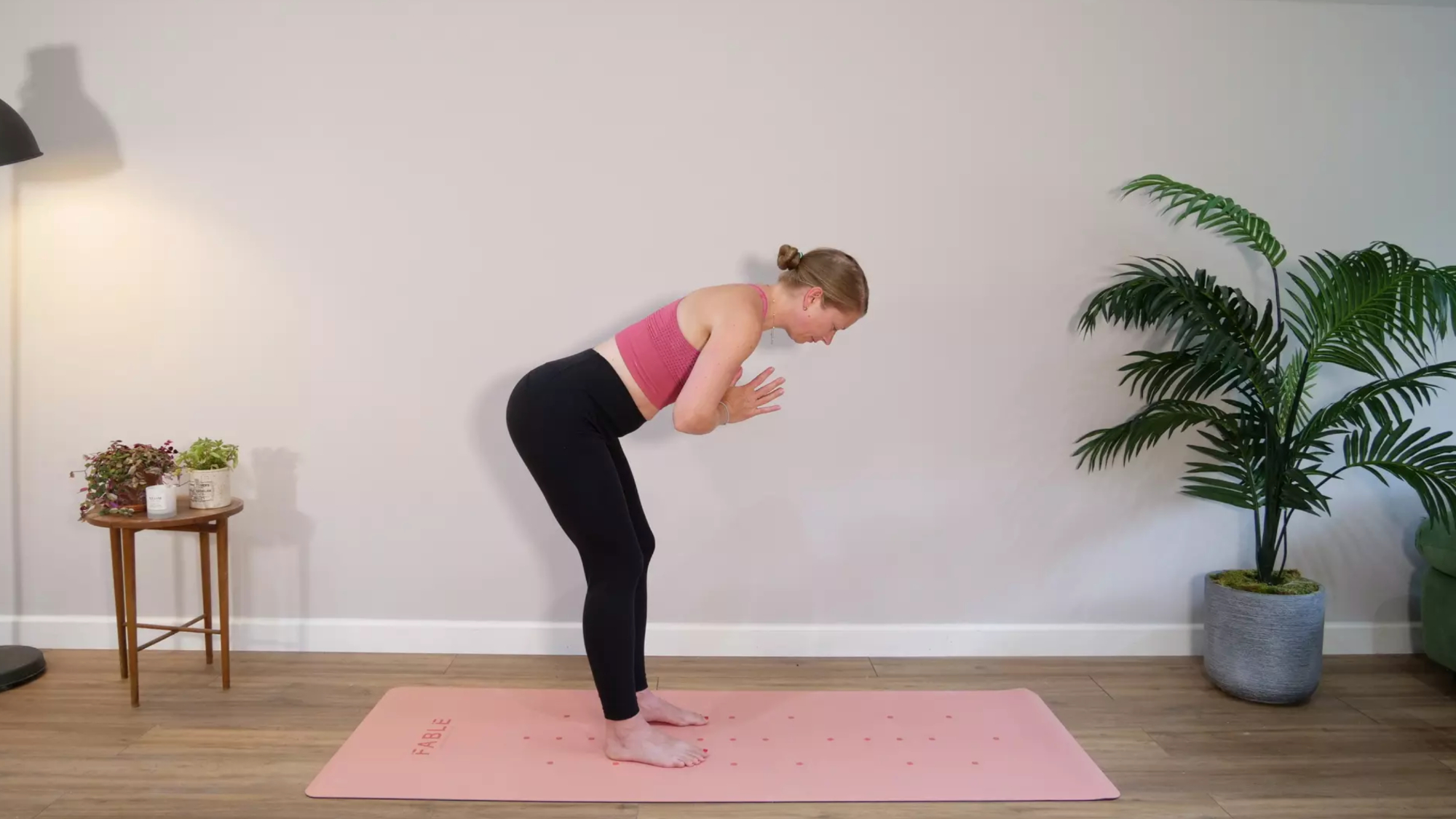
Grant says: "I would give this exercise to every human being if I could! Hip hinges activate the hamstrings and glutes, which given our modern-day lifestyles (that include too much sitting down) can become weak."
Reps: 10-12
- Find your neutral standing position and bring your hands to prayer at your chest. Make sure your knees are soft and then imagine that you are bowing, pushing your bum back and hinge at the hips until you can go no further and hold here.
- Keep your back neutral and you’ll get to a point where you feel a hamstring and a glute stretch. Ensure your knees are soft and you feet are entirely in contact with the ground.
- As you exhale, return to a natural standing position and then repeat.
2. Diving

Grants says: "Here we are taking hip hinges up a notch and adding an extra load/demand to the postural chain by taking the arms overhead. This also requires activation of the upper-back muscles to prevent the arms slumping forwards."
Reps: 10-12
- Start in a neutral standing position and bring your arms to cactus pose, with your shoulders and elbows at 90 degrees. Hinge at the hips to about 45 degrees and hold.
- As you exhale, reach your arms overhead as though you're diving into a pool. Return your arms to the cactus position as you inhale and return to your starting position. That's one repetition.
3. Thoracic extension
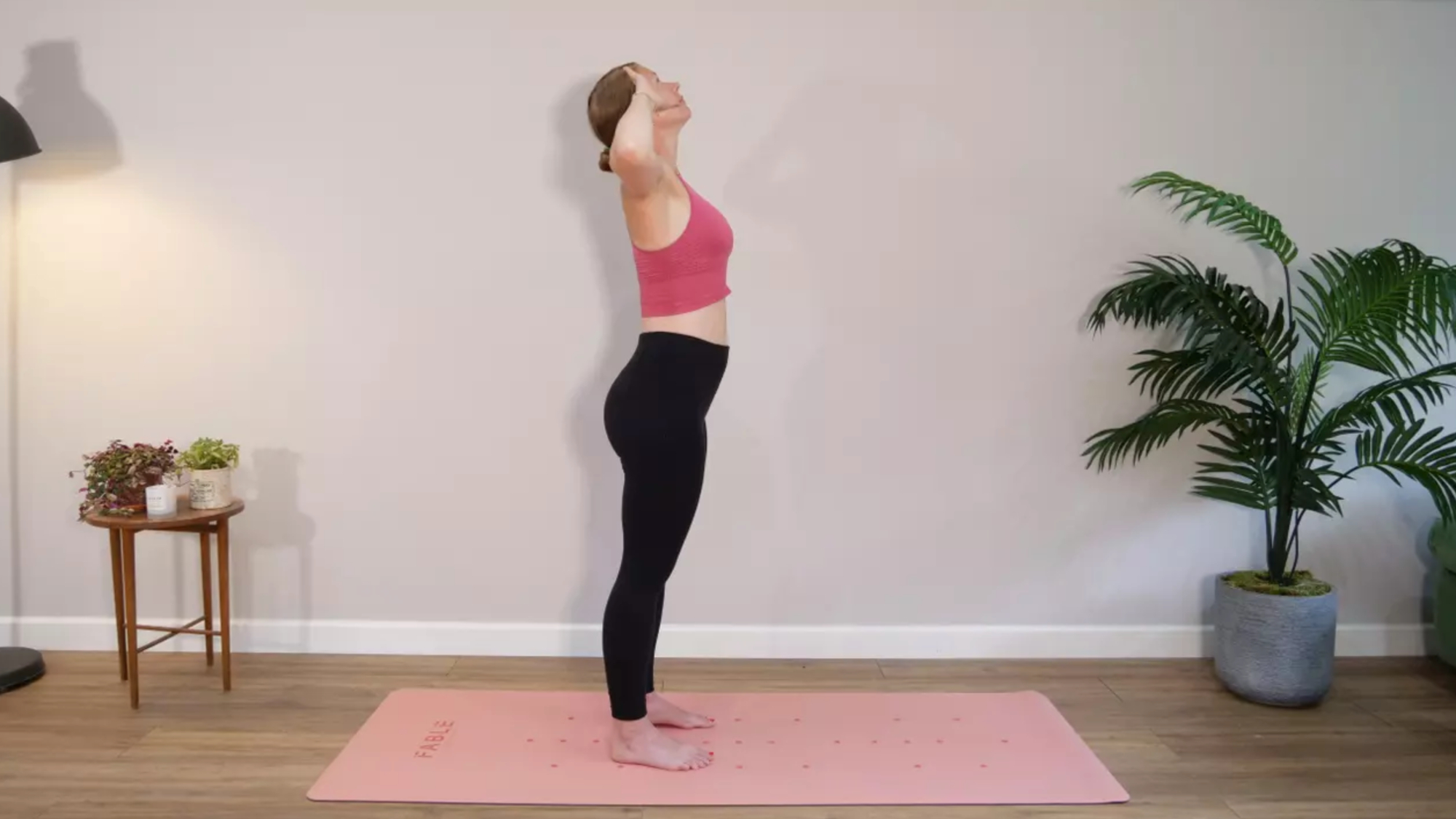
"Our thoracic spine is the upper portion of our spine around our shoulder blades/ribcage and it curves forwards. However, during our daily lives, we start to deepen the curve here as we look down at our devices," explains Grant.
"So, we need to ensure we are balancing this out and putting our bodies into thoracic extension as well. This exercise may feel tough, and range of movement may be limited at first, but persevere so long as it feels safe to do so."
Reps: 10-12
- Start in a standing position and bring your fingers to your temples with your elbows out to the side. As you inhale, raise your eye line, chin, and chest towards the ceiling, creating thoracic extension.
- Keep your pelvis still and imagine lifting up and out of your waist, rather than allowing all the weight to fall into your lower back.
- Exhale to slowly come back to the start position. That's one repetition. Repeat for 10-12 reps.
4. Breaststroke prep
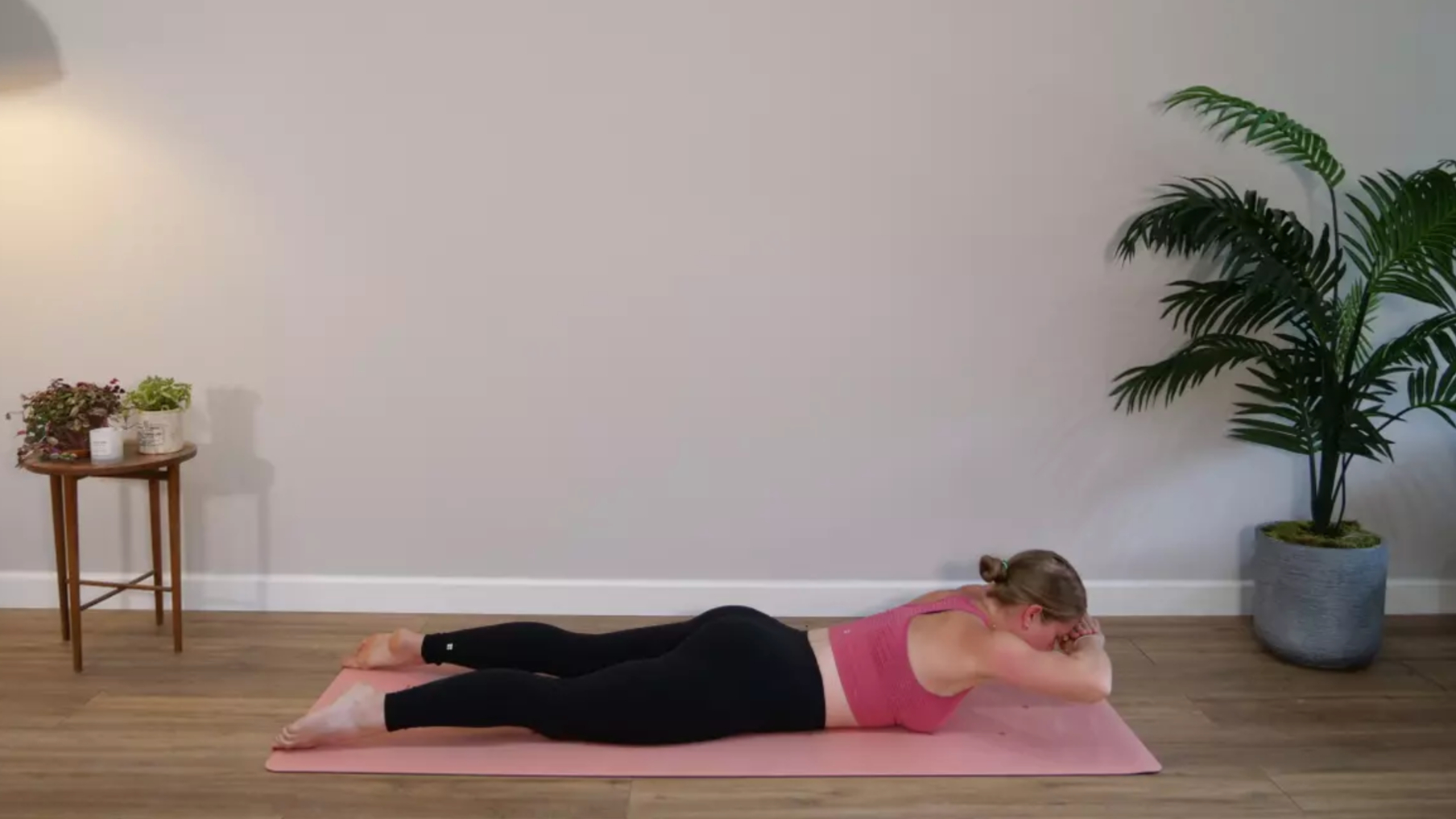
Grant says: "This is another amazing exercise for encouraging thoracic extension and building strength in the upper back. This will hopefully help counter the effects of modern life, which tends to weaken the back extensors instead."
Reps: 10-12
- Start lying on your front with your legs hip-width apart and your hands stacked one on top of the other underneath your forehead like a little pillow. Gently press your pubic bone into the floor — this will help to bring the pelvis to neutral.
- Inhale as you start to gently lift your head, chest, and arms away from the floor, lifting the upper-body into a straight line. Aim to lengthen your spine rather than bend your back to lift from the ground.
- Exhale to gently release back down to the floor to complete the repetition and repeat 10-12 times.
This Pilates for posture routine targets the muscles along the back of your body to help even things out after a long bout of sitting. But they're not the only muscles involved in your posture — your core muscle also plays a role.
This section of mid-body muscle, which includes your abdominals, helps connect your upper and lower-body and helps you balance. If you enjoy Pilates, but want something to target this area, then give this Pilates abs workout a try.
Alice Porter is a freelance journalist covering lifestyle topics including health, fitness and wellness. She is particularly interested in women's health, strength training and fitness trends and writes for publications including Stylist Magazine, Refinery29, The Independent and Glamour Magazine. Like many other people, Alice's personal interest in combining HIIT training with strength work quickly turned into a CrossFit obsession and she trains at a box in south London. When she's not throwing weights around or attempting handstand push-ups, you can probably find her on long walks in nature, buried in a book or hopping on a flight to just about anywhere it will take her.
-
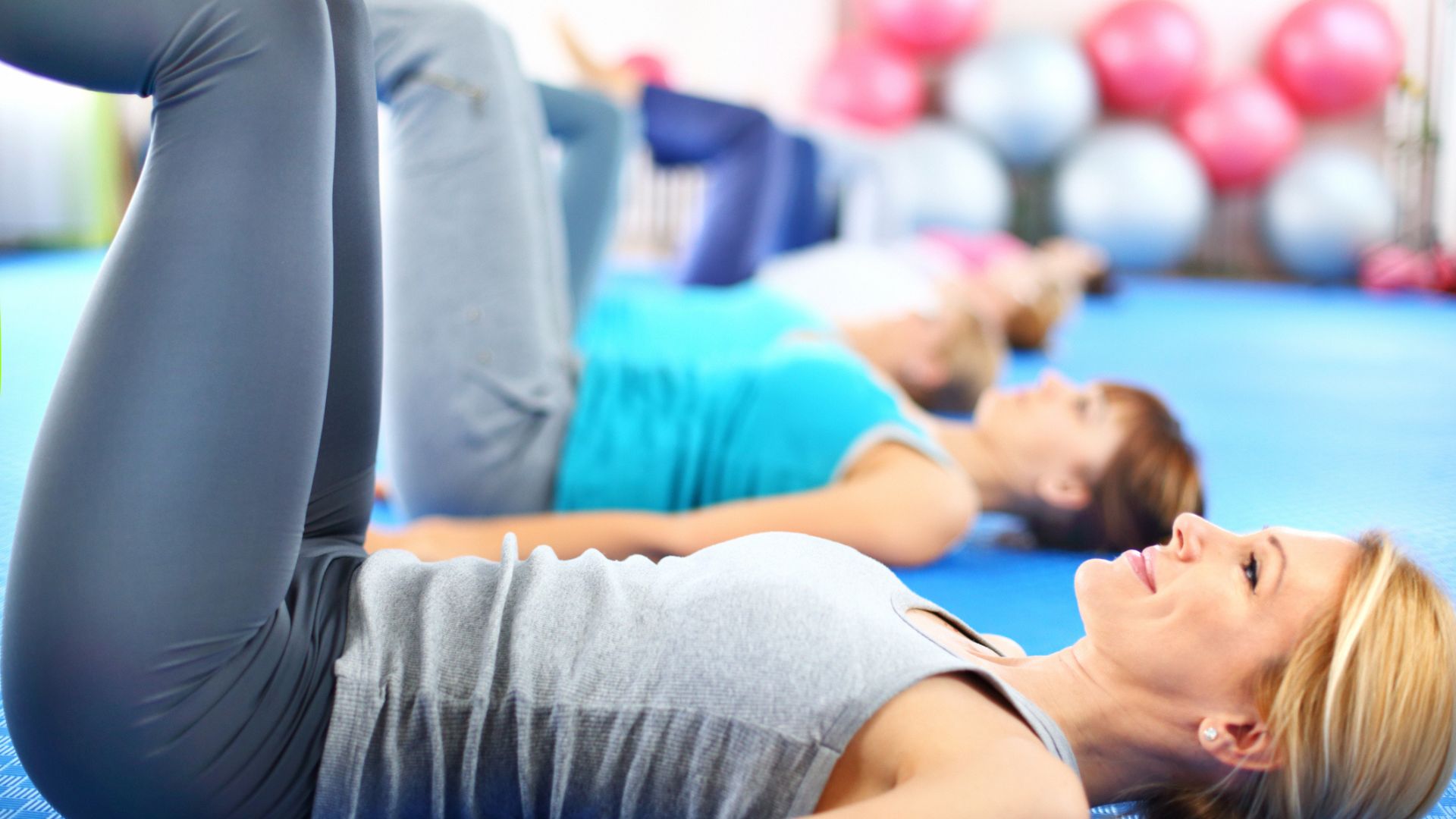 A Pilates instructor says this is the beginner-friendly core exercise everyone should try
A Pilates instructor says this is the beginner-friendly core exercise everyone should tryForget crunches, this is the perfect foundation move
By Alice Porter Published
-
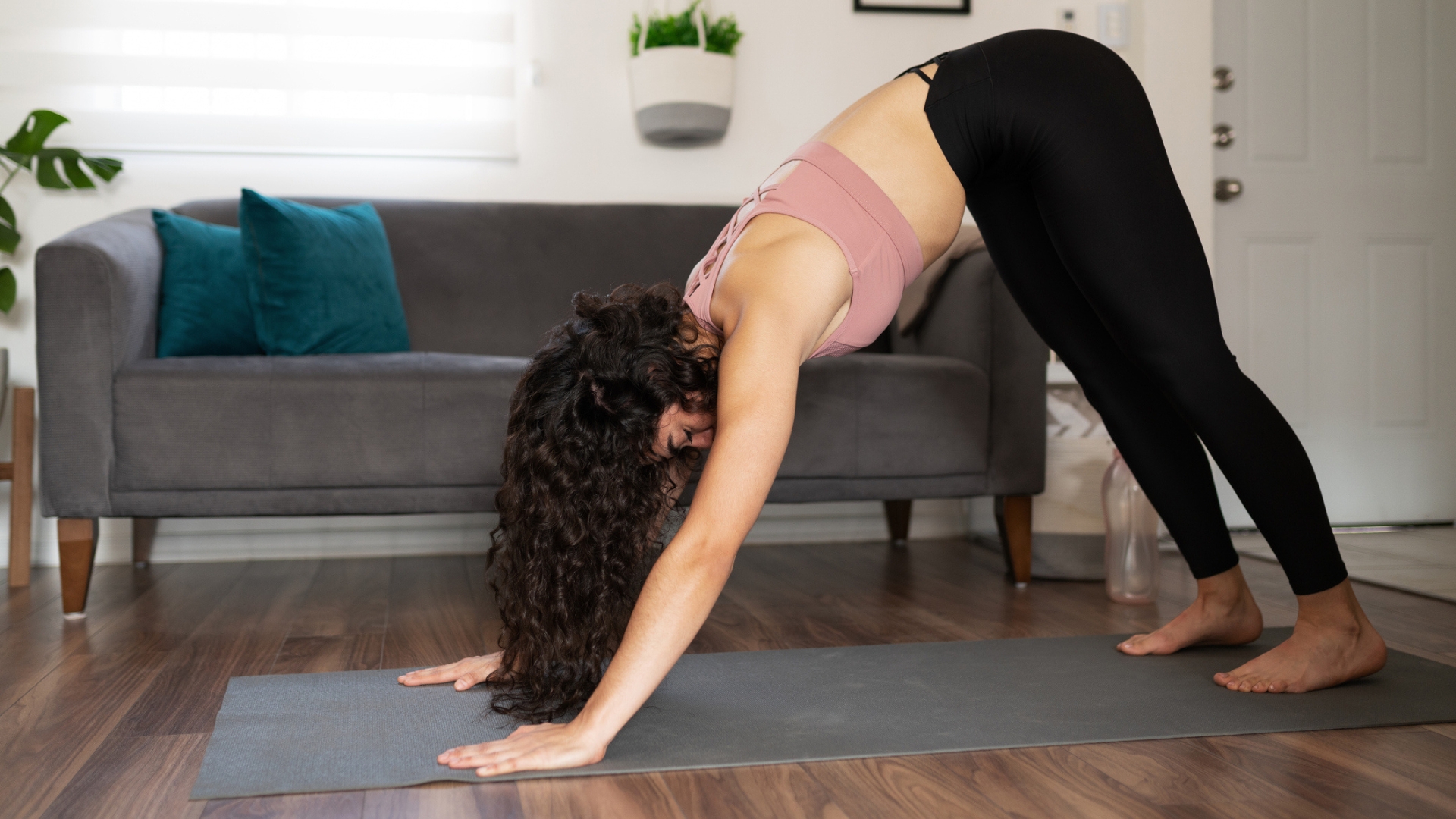 Prevent poor posture and release tension from sitting down with these four simple stretches from a yoga instructor
Prevent poor posture and release tension from sitting down with these four simple stretches from a yoga instructorThe daily poses he swears by, no matter what
By Alice Porter Published